First Lieutenant Carl Mervil Cousins
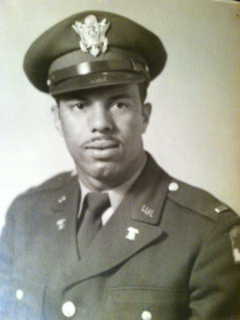
- Unit: 47th Quartermaster Company, 47th Infantry Division
- Date of Birth: October 13, 1932
- Entered the Military: September 30, 1952
- Date of Death: December 4, 2016
- Hometown: Victoria, Virginia
- Place of Death: Atlantic County, New Jersey
- Award(s): National Defense Service Medal
- Cemetery: Section 34, Grave 1522. Washington Crossing National Cemetery, Newtown, Pennsylvania
Mentored by Mr. Gregory Maigur
Holicong Middle School and Central Bucks High School - East
2024/2025
Early Life
Lucious J. Cousins and Anne Dowdy Cousins were already raising three young boys (Alphus, Marquis, and Rhoecus), when they welcomed a fourth son, Carl Mervil Cousins, into their family on October 13, 1932. The family lived in the small town of Victoria, in Lunenburg County, Virginia, which was defined by its long-term reliance on tobacco farming and harsh racial segregation.
As a child, Carl was taught the values of honesty, reliability, loyalty, and hard work. He attended Lunenburg Training School, which was fully funded by African American patrons to account for the lacking facilities for secondary education. Today Lunenburg Training School still stands as Lunenburg High School. At the time, the school only served African American students in accordance with the Jim Crow laws and Public Assembly Act of 1926 enforced in Virginia at the time. Cousins graduated as the class of 1948’s valedictorian.
Cousins attended Virginia State College as a member of the Reserve Officers’ Training Corps (ROTC) program and graduated with a Bachelor of Science degree in 1952. That same year he was commissioned into the U.S. Army. He was 19 years old.
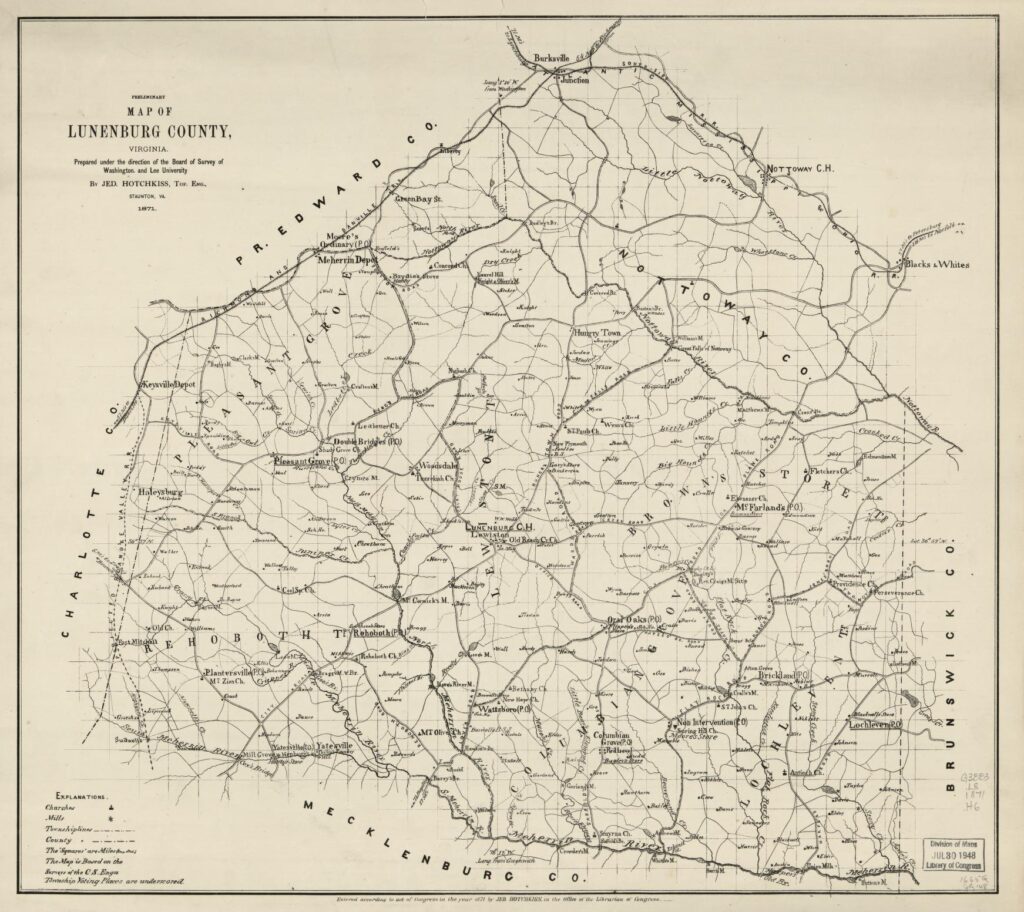
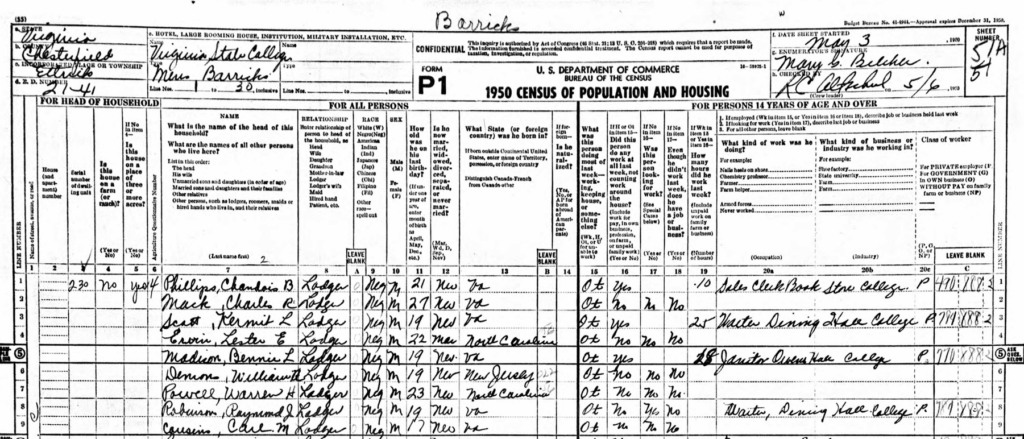
Homefront
Economy of Victoria, Virginia
Victoria, Virginia, was primarily known for its tobacco industry. During the Korean War, Victoria contributed to the production of K Rations, which included a small pack of four cigarettes. The Phillip Morris Company produced half the cigarettes smoked in the country and contributed to the growth of tobacco farming in the southern part of the state. Another large contributor to the economy was the Virginian Railroad.
During the 1940s and 1950s, the economy began to shift in Victoria because of the increase in automobiles which decreased dependence on railroads. The Virginian Railroad was a large part of the economy and the shift away from railroads decreased job opportunities. Many young men were drafted into the war and left Victoria permanently to find better job opportunities.
Social Climate of Victoria, Virginia
Victoria, Virginia, was heavily segregated during this time because of the laws that were passed in the 1920s. In 1924, the Racial Integrity Law outlawed interracial marriage in Virginia. Following this, in 1926, the Public Assemblages Act was passed. This enforced segregation of public places throughout Virginia. The laws shaped the social and legal environment that Cousins was exposed to throughout much of his early life.
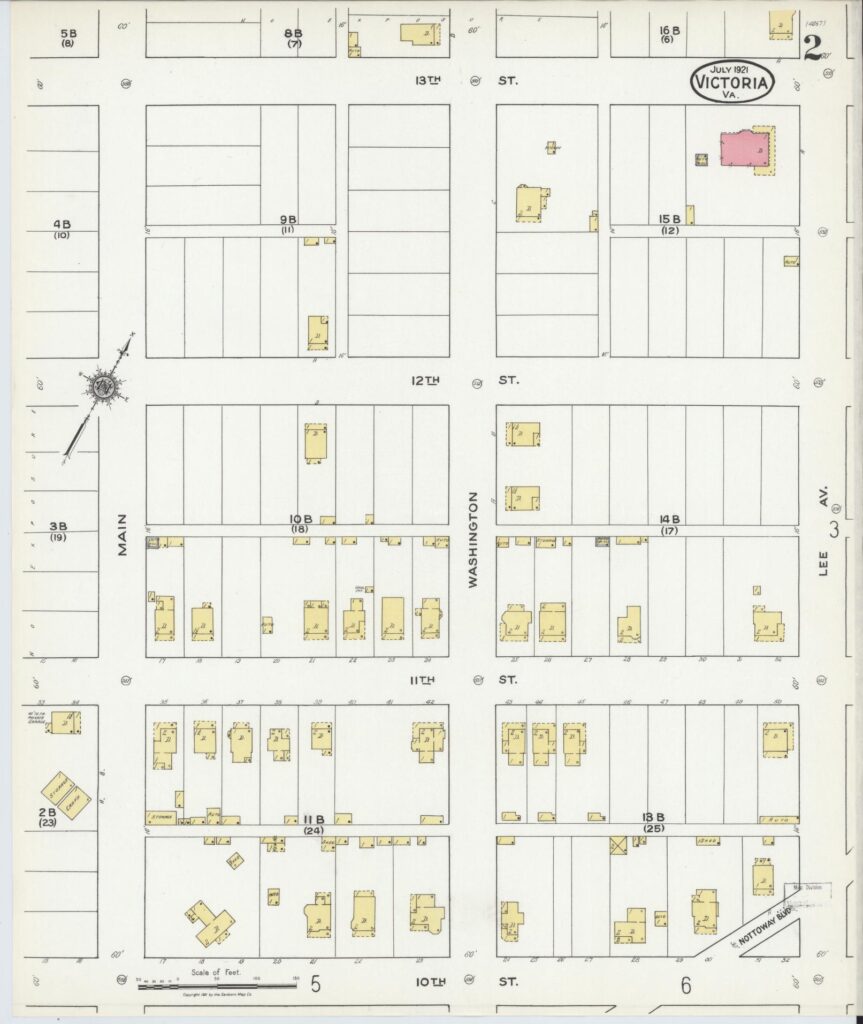
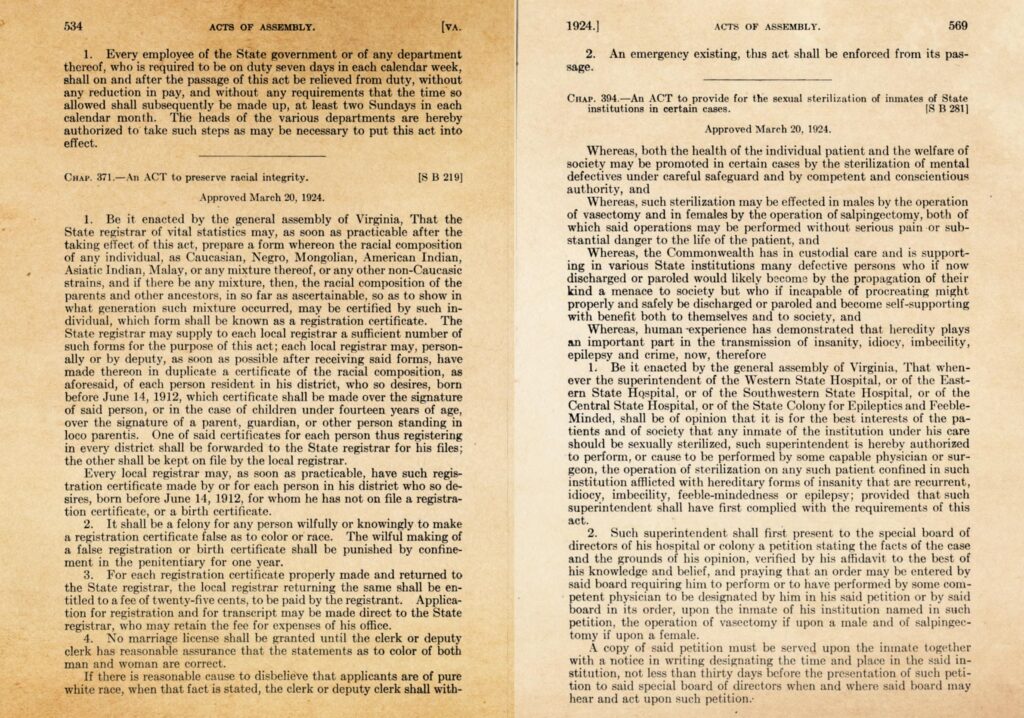
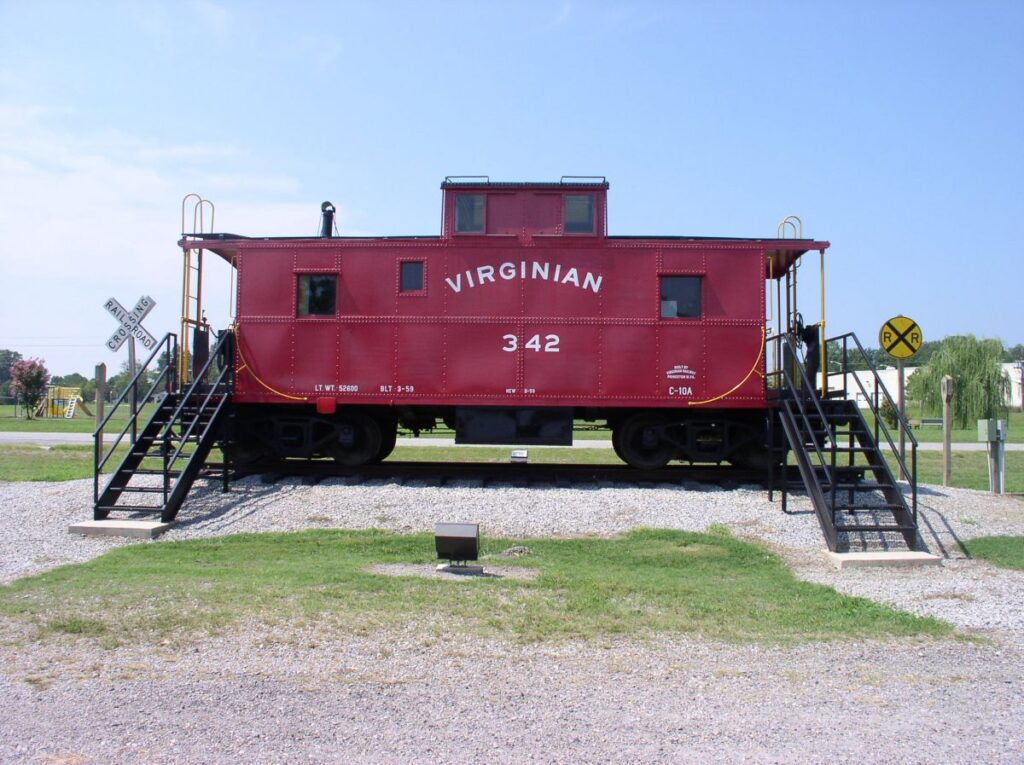
Military Experience
Carl Mervil Cousins was commissioned as a second lieutenant in the Army through ROTC at Virginia State College. His first assignment on active duty was in September 1952 at Camp Pickett, Virginia (now Fort Barfoot). For two months, he had minor jobs as a member of the 573rd Quartermaster Service Company before he was sent to the Army’s Quartermaster School in Fort Lee, Virginia (now Fort Gregg-Adams).
After he finished his training, Cousins was stationed in Camp Rucker, Alabama, where he served with the 47th Quartermaster Company attached to the 47th Infantry Division. He subsequently served as the S-4, the staff officer in charge of supplies and logistics, for the 136th Infantry Battalion, also at Fort Rucker. His final assignment before being honorably discharged in September 1954 was as an assistant property officer at Fort Rucker.
Throughout his military career, Carl Mervil Cousins remained stateside, and he never fought in Korea or any battles. His contribution to the war effort was clear through his service and loyalty. Cousins moved up his rank during his military service, from second lieutenant to first lieutenant.
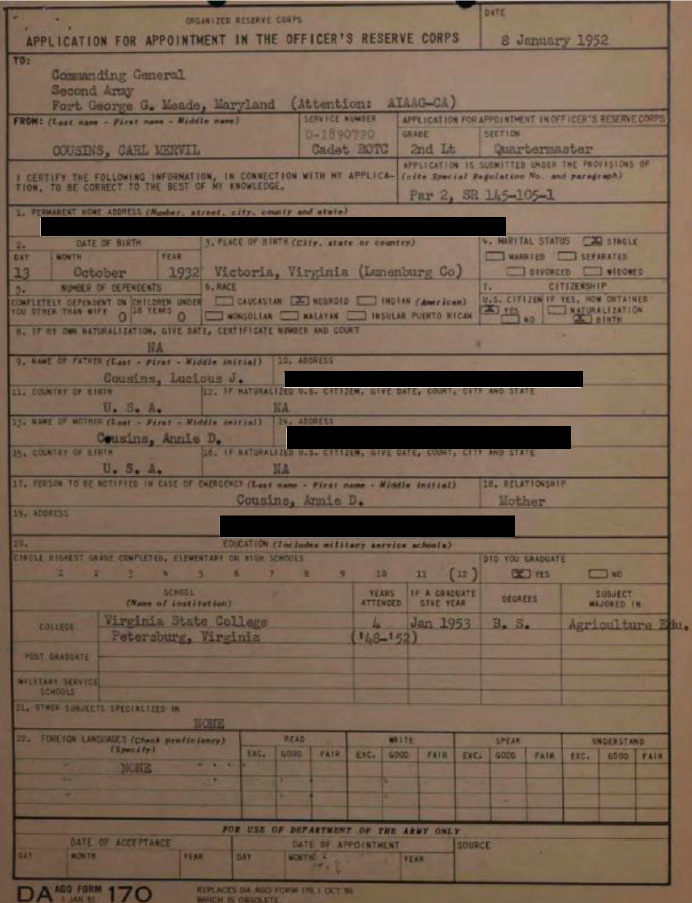
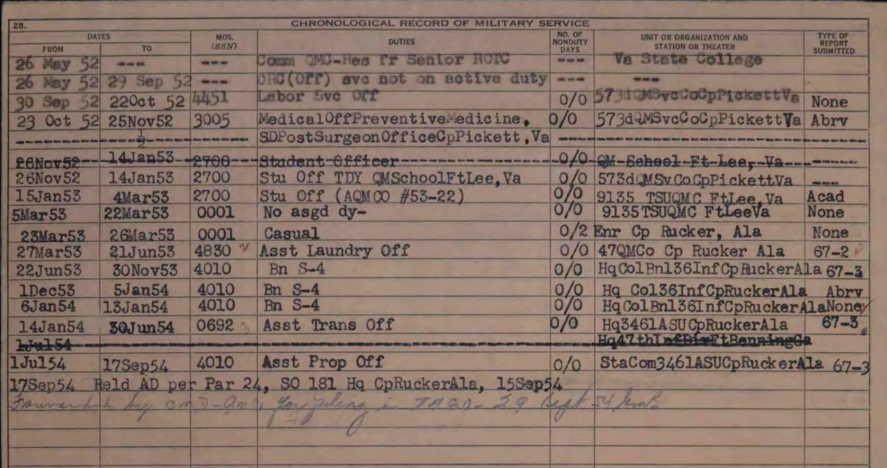
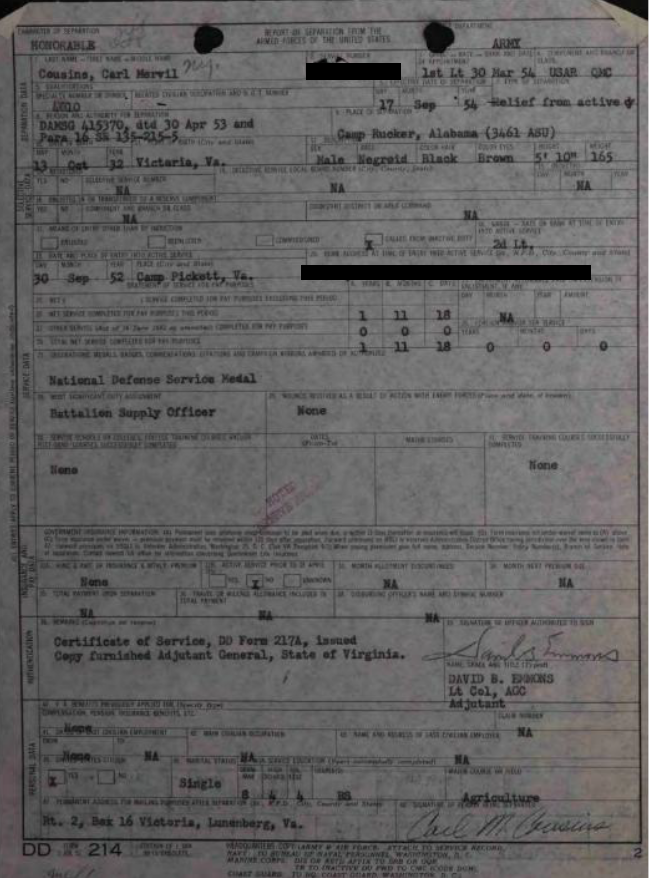
Veteran Experience
Carl Mervil Cousins lived a full life and had a successful career following his time in the U.S. Army. He attended Tuskegee University and earned his doctorate degree in veterinary medicine. Following his graduation, the University of Pennsylvania School of Veterinary Medicine recruited him to be an instructor of small animal medicine surgery. Pennsylvania became his home until he passed.
Cousins was a trailblazer as an educator. He was the first licensed African American veterinarian in the state of Pennsylvania. He also started the Haverford Small Animal Hospital, which still operates today.
He also served on several boards, including the Ralston Purina Advisory Board and the Bryn Mawr Hospital Foundation Board of Trustees.
Family Life
Cousins was a husband as well as a veterinarian. He married his wife, Althea L. Edminson, on April 14, 1962. The two were married for 54 years until his passing. During that time, they had two daughters and four grandchildren.
Carl Mervil Cousins was a dedicated member of the Zion Baptist Church in Ardmore, Pennsylvania. He was also well-liked and respected by the local community, where he was an active member of the Rotary Club and the American Red Cross.

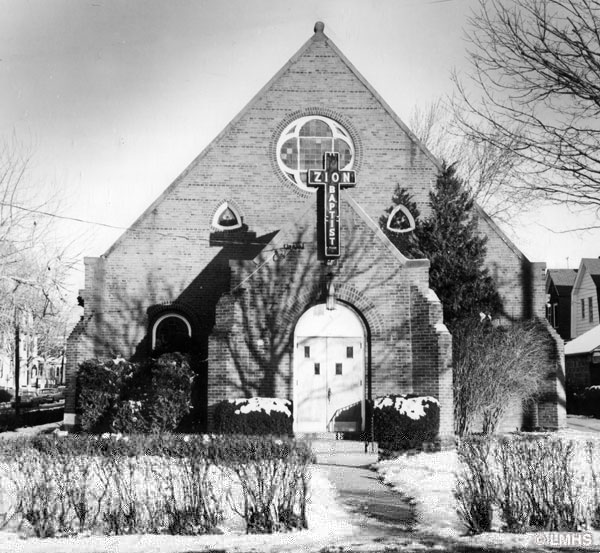
Commemoration
Carl Mervil Cousins passed away on December 4, 2016. His wife, Althea, died on October 9, 2021. They are buried together at Washington Crossing National Cemetery in Newtown, Pennsylvania.


Bibliography
Primary Sources
Carl Mervil Cousins. Virginia, U.S., Birth Records, 1912-2015, Delayed Birth Records, 1721-1920. https://ancestry.com.
“Carl Mervil Cousins.” Main Line Times and Suburban, December 12, 2016. https://www.mainlinemedianews.com/obituaries/carl-mervil-cousins-philadelphia-pa/.
Carl Mervil Cousins, Official Military Personnel File, Department of the Army. National Archives and Records Administration – St. Louis.
Cook, Bonnie L. “Carl Cousins, 84, black pioneer in veterinary work.” The Philadelphia Inquirer [Philadelphia, PA], December 11, 2026. Newspapers.com (254786201).
“Dr. Carl M. Cousins.” Philadelphia Inquirer, December 11, 2016. https://www.legacy.com/us/obituaries/inquirer/name/carl-cousins-obituary?id=6825297.
Haverford Animal Hospital. Photograph. Haverford Animal Hospital. https://haverfordah.com/about-us/welcome-to-our-clinic/.
Hotchkiss, Jedediah. Preliminary map of Lunenburg County, Virginia. Map. 1871. Library of Congress (2012592147). https://www.loc.gov/item/2012592147/.
Sanborn Fire Insurance Map from Victoria, Lunenburg County, Virginia. Maps. June 1921. Library of Congress. https://www.loc.gov/resource/g3884vm.g3884vm_g090851921/?st=gallery.
Virginia. Chesterfield County. 1950 U.S. Federal Census. https://ancestry.com.
Secondary Sources
“Althea Loupenia Edminston Cousins.” Find a Grave. Updated October 20, 2021. Accessed April 4, 2025. https://www.findagrave.com/memorial/233229593/althea_louphenia-cousins.
“Brief Histories of the Schools of the University of Pennsylvania.” Penn Libraries, University of Pennsylvania. 1984. https://archives.upenn.edu/exhibits/penn-history/school-histories/vet/.
“Carl Mervil Cousins.” Veterans Legacy Memorial, U.S. Department of Veterans Affairs. Accessed April 5, 2025. https://www.vlm.cem.va.gov/CARLMERVILCOUSINS/15D4052.
“Church History.” Zion Baptist Church of Ardmore. Updated 2024. Accessed March 29, 2025. https://sites.google.com/view/zionbaptistardmore/about-us/church-history/.
“Dr. Carl Mervil Cousins.” Find a Grave. Updated December 11, 2016. Accessed March 29, 2025. https://www.findagrave.com/memorial/173763140/carl_mervil-cousins.
Fischer, Bernard. “Gallego Mills.” The Historical Marker Database. Updated November 1, 2009. https://www.hmdb.org/m.asp?m=23880.
“Korean War.” U.S. Army Center of Military History. https://history.army.mil/Research/Research-by-Conflict-and-Time-Period/Korean-War/.
“Lucious Jackson Cousins.” Find a Grave. Updated March 20, 2012. Accessed March 29, 2025. https://www.findagrave.com/memorial/87084568/lucious_jackson_cousins.
“The Railroad History and Charm of Victoria, Virginia.” Living in Lunenburg. Updated August 15, 2023. Accessed March 29, 2025. https://lunenburgva.com/the-railroad-history-and-charm-of-victoria-virginia/.
Reynolds, P. Preston. “UVA and the History of Race: Eugenics, the Racial Integrity Act, Health Disparities.” UVA Today, January 9, 2020. https://news.virginia.edu/content/uva-and-history-race-eugenics-racial-integrity-act-health-disparities.
“Time Period: 1924 to Present, Made in Virginia.” Virginia Museum of History and Culture. Accessed March 29, 2025. https://virginiahistory.org/learn/story-of-virginia/chapter/made-virginia.
“Urbanization in Virginia.” Virginia Museum of History and Culture. Accessed March 29, 2025. https://virginiahistory.org/learn/urbanization-virginia.
“Welcome to The Mother of Counties: Lunenburg County, VA.” Lunenburg County. Accessed March 29, 2025. https://lunenburgva.gov/.
Wolfe, Brendan. “Racial Integrity Laws (1924–1930).” Encyclopedia of Virginia. Updated December 7, 2020. Accessed March 29, 2025. https://encyclopediavirginia.org/entries/racial-integrity-laws-1924-1930/.
This profile was funded by a grant from the United States Department of Veterans Affairs. The opinions, findings, and conclusions stated herein are those of the author and do not necessarily reflect those of the United States Department of Veterans Affairs.

